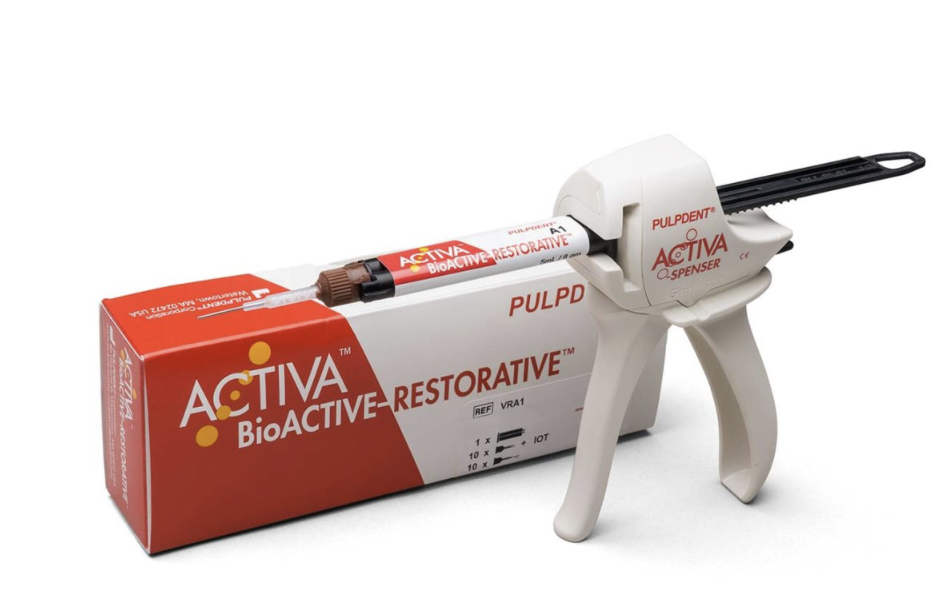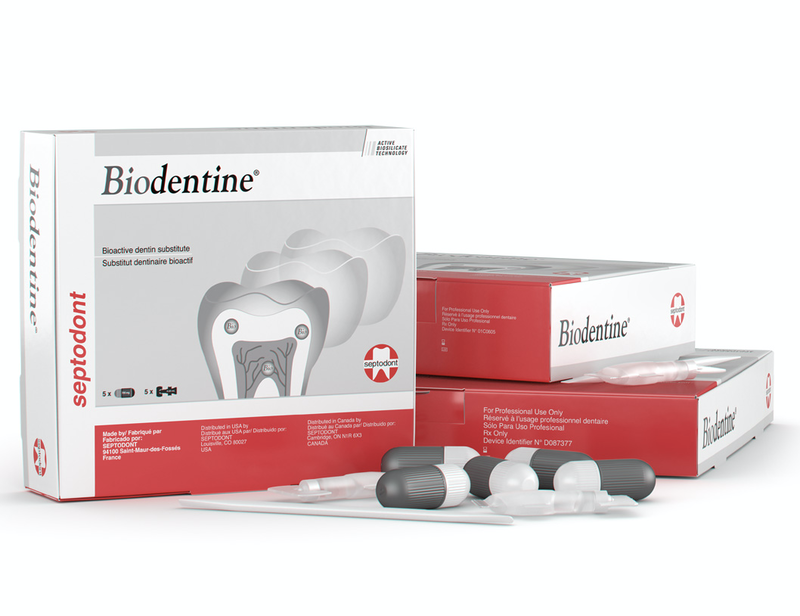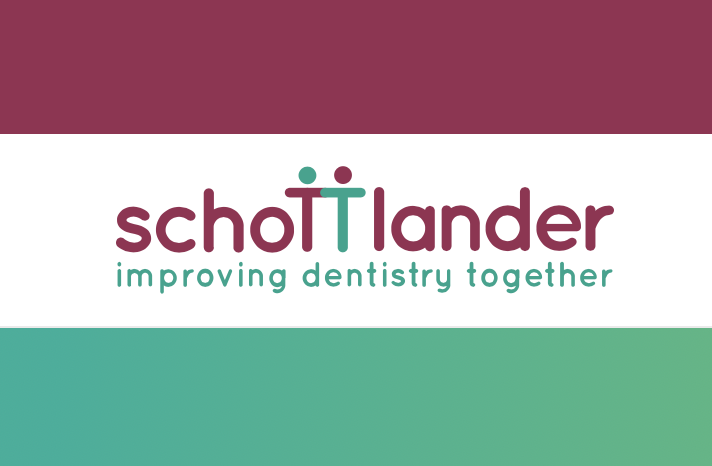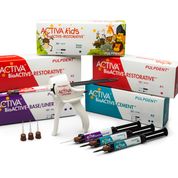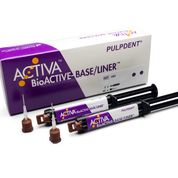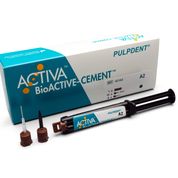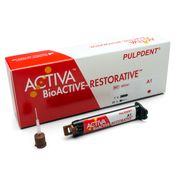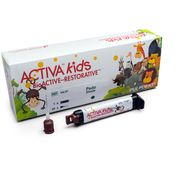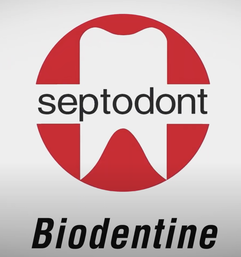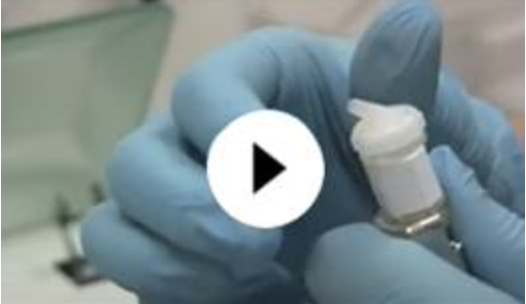FILLING MATERIALS
There are a vast number on the market, both resin-based and glass ionomer, with an equivalent number of bonding agents. Still, we have some new materials that allow us to broaden treatment with minimal or no use of the drill or 3:1. If I may introduce you to 3 striking products that cross the border between non-invasive treatment and minimally invasive treatment. These are the newer biomimetic materials that can help "heal "the damaged tooth whilst providing restoration of the cavity. I feel that the guidelines for pulpitis are too rigid and that the pulp can recover with some gentle encouragement. Certainly, we should think very carefully before embarking down the "filling/extraction" route. Biodentine from Septodont is proving an exciting product with many uses. This was the first all-in-one biocompatible and bioactive material to be used wherever dentine has been damaged. It is of particular use in possibly preventing the progress to irreversible. Pulpdent's Activa BioACTIVE dental filling material behaves much like natural teeth. The material is bioactive, thus stimulating the formation of dental hydroxyapatite and chemically bonds to teeth, which helps seal them against decay. The Activa range has recently been increased. This material is ready to be used and can eliminate the need for drilling.
Another new advance could well be RENEWAL MI which should shortly receive its CE mark. This light-cured composite uniquely bonds directly to hard carious dentine and 'seals in' the decay. No AGP/enhanced PPE/invasive preps. Again the ART technique could be used with sharp hand instruments and the ceramic burs to remove softer dentine. This material was developed and extensively tested by the excellent team at the Eastman, being manufactured under licence by Schottlander. A 'slightly' older material that one could consider is gold. I think that regaining occlusal harmony should be an important consideration. Reconstructing massive restorations or damaged teeth can be very time consuming, followed by checking/adjusting the occlusion. I think an indirect restoration should be considered and allow the technician to obtain the best contours and restore the anatomical features. If a light-cured material is being used, it might be possible to use a prepared sheet of cling film to place over the restoration and have the patient bite ( GENTLY!) and thus adapt it to their occlusion. One could then incrementally cure it. This could avoid significant occlusal discrepancies. But I have to say that the body/ occlusion can adapt to change in many cases. We only have to look at when orthodontists alter an occlusion with a large amount of composite being deposited on the posterior dentition. Whatever materials and techniques we employ, we have to advise our patients that just because they have had treatment carried out, this does not mean that they should not return for frequent "Dental MOT's" and that we do expect them to share their end of the bargain in carrying out our advice.
Another new advance could well be RENEWAL MI which should shortly receive its CE mark. This light-cured composite uniquely bonds directly to hard carious dentine and 'seals in' the decay. No AGP/enhanced PPE/invasive preps. Again the ART technique could be used with sharp hand instruments and the ceramic burs to remove softer dentine. This material was developed and extensively tested by the excellent team at the Eastman, being manufactured under licence by Schottlander. A 'slightly' older material that one could consider is gold. I think that regaining occlusal harmony should be an important consideration. Reconstructing massive restorations or damaged teeth can be very time consuming, followed by checking/adjusting the occlusion. I think an indirect restoration should be considered and allow the technician to obtain the best contours and restore the anatomical features. If a light-cured material is being used, it might be possible to use a prepared sheet of cling film to place over the restoration and have the patient bite ( GENTLY!) and thus adapt it to their occlusion. One could then incrementally cure it. This could avoid significant occlusal discrepancies. But I have to say that the body/ occlusion can adapt to change in many cases. We only have to look at when orthodontists alter an occlusion with a large amount of composite being deposited on the posterior dentition. Whatever materials and techniques we employ, we have to advise our patients that just because they have had treatment carried out, this does not mean that they should not return for frequent "Dental MOT's" and that we do expect them to share their end of the bargain in carrying out our advice.
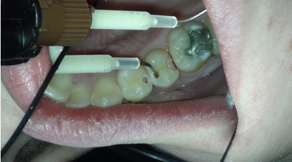
CLICK on images for further details on using materials
and buying materials
and buying materials

powerpoint presentation by pulpdent
HERE |
While in practice, as I used this as an alternative for Amalgam fillings on the posterior teeth, it worked exceptionally well and was the best material I used as you rarely came across secondary caries, and you didn't need mechanical retention for it. In later years, I removed the GI with ultrasonics, smoothed rough edges, and scanned then milled an onlay, inlay-type Volkscrown. MID
